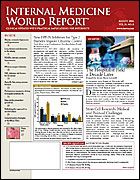Publication
Article
Botulinum Toxin Type a Thwarts Refractory Migraines
Author(s):
SAN DIEGO—Botulinum toxin type A (Botox) is effective for preventing migraines in patients with severe migraines that are unresponsive to preventive therapies, investigators reported at the annual meeting of the American Academy of Neurology.
The data show that the treatment works in about two thirds of patients who have >15 headache days in a month and have failed ≥1 preventive, concomitant medications.
“The physician who uses botulinum toxin type A to treat headaches does not have to be a neurologist,” Alexander Mauskop, MD, a neurologist and director of the New York Headache Center in New York, NY, said.
“I have trained about 150 doctors, and many of them are not neurologists. All that is required is that you have an interest in headaches, that you know how to diagnose and treat them, and that botulinum toxin A is only part of your armamentarium, and you are not considering its use for financial reasons.”
Dr Mauskop and colleagues reviewed data that were prospectively collected at 10 US headache centers.
Participants (aged ≥12 years) were diagnosed with a primary headache disorder according to International Headache Society Classification guidelines.
Those who had been previously treated with botulinum toxin of any serotype for any indication were excluded from the study.
Common validated measures were used to determine the outcomes, including the Migraine Disability Assessment Scale (MIDAS).
Of the 703 patients enrolled, 482 (68.6%) were continuing botulinum toxin type A therapy at the end of the study.
About two thirds of patients had chronic migraine; the average headache-related disability and average headache severity were rated as moderate to severe by 79% and 95.4% of patients, respectively.
Some 62.9% of patients reported an improvement in headache symptoms after botulinum toxin type A treatment. After 3 months, MIDAS total scores decreased by a mean of 31.7 points from baseline, and the number of headache days decreased by a mean of 20.3 days from baseline.
Only 3 (0.4%) patients discontinued treatment because of side effects.
Dr Mauskop pointed out that while some patients obtain satisfactory relief from the initial treatment, patients generally get added relief after a few treatments.






